Red Claw Blue Lobster CRAYFISH – Cherax quadricarinatus -3-4 Cm, Thriving Freshwater Crustacean, Perfect Companions for Aquatic Plants and Enriching Tank Environments
£11.99 Original price was: £11.99.£9.99Current price is: £9.99.
Welcome these beautiful Red Claw Blue Lobsters (Cherax quadricarinatus) into your aquarium. Their stunning blue coloration and graceful movements create enchanting aquatic environments. Perfect companions for aquarists seeking vibrant freshwater crayfish and lush aquarium plants.
Species Introduction
The Red Claw Blue Lobster, scientifically known as Cherax quadricarinatus, is a captivating freshwater crustacean that originates from the tropical regions of Australia and New Guinea. Known for their vibrant blue coloration and distinctive red claws, these crayfish are not only visually stunning but also play a vital role in maintaining the ecological balance of their natural habitats. In the wild, they thrive in freshwater rivers, streams, and ponds, where they inhabit rocky crevices and burrows. This species exhibits a fascinating array of behaviors, making them a delightful addition to any freshwater aquarium. Their ability to adapt to various environments and conditions makes them suitable for both novice and experienced aquarists alike.
Care Requirements Dashboard
| Optimal Living Conditions | |
|---|---|
| Water Temperature | 24-27°C (75-81°F) |
| pH Level | 6.5-7.5 |
| Water Hardness | 4-12 dKH |
| Minimum Tank Size | 80L (20 gal) |
| Salinity | Freshwater |
| Care Level | Beginner Friendly |
Natural Behavior & Temperament
The Red Claw Blue Lobster is known for its inquisitive nature and active behavior. These crustaceans are primarily nocturnal, often hiding during the day and emerging at night to explore their surroundings. They exhibit a range of social behaviors, including territorial displays and interactions with tank mates. While generally peaceful, they can become aggressive towards their own kind or other similar-sized crustaceans, especially during molting periods. Providing ample hiding spots and territories within the aquarium can help mitigate aggression and promote a harmonious environment. Observing their interactions can be a source of endless fascination for aquarists, as they display unique personalities and behaviors that vary from individual to individual.
Tank Setup Guide
Creating an optimal habitat for your Red Claw Blue Lobster involves replicating their natural environment as closely as possible. A minimum tank size of 20 gallons is recommended to provide sufficient space for swimming and foraging. The substrate should consist of fine gravel or sand to mimic the riverbed, allowing them to burrow and explore. Incorporating plenty of hiding spots using rocks, driftwood, and aquatic plants will not only enhance the aesthetic appeal of the aquarium but also provide shelter and security for your crayfish. Live plants, such as Java fern and Anubias, are excellent choices as they can thrive in the same water conditions and offer additional hiding places. Ensure that the tank is well-filtered and equipped with a secure lid, as these crustaceans are known to be escape artists.
Water Quality Management
Maintaining optimal water quality is crucial for the health and well-being of your Red Claw Blue Lobster. The ideal pH range is between 6.5 and 8.0, with a temperature of 22-28°C (72-82°F) and a hardness level of 5-15 dGH. Regular water testing is essential to monitor these parameters and ensure they remain stable. A reliable filtration system is recommended to keep the water clean and free of toxins. Additionally, performing weekly water changes of 10-20% will help maintain water quality and remove any accumulated waste. Be cautious of sudden changes in water conditions, as crayfish are sensitive to fluctuations, which can lead to stress or health issues. It is also advisable to use a water conditioner to remove harmful chemicals and chlorine from tap water before introducing it to the aquarium.
Feeding & Nutrition
Feeding your Red Claw Blue Lobster a balanced and varied diet is essential for their growth and overall health. These crustaceans are omnivorous, meaning they will consume both plant and animal matter. A high-quality commercial crayfish or shrimp pellet should form the base of their diet, supplemented with fresh vegetables such as zucchini, spinach, and carrots. Additionally, they enjoy protein-rich foods like bloodworms, brine shrimp, and small pieces of fish or shrimp. It is important to provide food in small amounts that can be consumed within a few minutes to prevent overfeeding and maintain water quality. A feeding schedule of 2-3 times per week is recommended, ensuring that any uneaten food is promptly removed to avoid water contamination. Monitoring their feeding habits will also help you understand their preferences and adjust their diet accordingly.
Compatibility Guide
When selecting tank mates for your Red Claw Blue Lobster, it is crucial to consider their temperament and potential for aggression. While they can coexist peacefully with many species, it is advisable to avoid keeping them with smaller fish or invertebrates that may be seen as prey. Suitable tank mates include larger, peaceful fish such as tetras, barbs, and rasboras. Additionally, other larger crustaceans, such as certain shrimp species, can be compatible if given enough space and hiding spots. However, it is essential to monitor interactions closely, especially during feeding times or when establishing territories. Providing ample space and environmental enrichment will help reduce aggressive behavior and promote a harmonious community tank.
Health & Wellness
Maintaining the health and well-being of your Red Claw Blue Lobster involves regular monitoring for signs of stress or illness. Common issues include shell disease, which can occur due to poor water quality or stress. Symptoms may include discoloration or lesions on the shell. To prevent such issues, ensure that water parameters remain stable and that the aquarium is adequately filtered. Providing a varied diet rich in calcium will also support shell health. If you notice any abnormal behavior, such as lethargy, loss of appetite, or unusual hiding, it is essential to investigate potential causes and take corrective action. Regular water changes and maintaining a clean tank environment are crucial for preventing health problems and ensuring your crayfish thrive.
Breeding Information
Breeding Red Claw Blue Lobsters can be a rewarding experience for aquarists. To encourage breeding, it is essential to provide optimal conditions, including stable water parameters, plenty of hiding spots, and a nutritious diet. During mating, the male will grasp the female and transfer sperm, which she will store until she is ready to fertilize her eggs. After a few weeks, the female will carry the fertilized eggs under her tail until they hatch into tiny larvae. It is important to provide a separate breeding tank or a designated area in the main tank to protect the young from potential predators. The larvae will require specific care, including appropriate feeding and water conditions, to ensure their survival and growth into juvenile crayfish.
Acclimation Process
Introducing your Red Claw Blue Lobster to a new tank requires a careful acclimation process to minimize stress and ensure a smooth transition. Begin by floating the sealed bag containing the crayfish in the aquarium for about 15-20 minutes to equalize the temperature. After this, gradually introduce small amounts of tank water into the bag over the course of an hour. This process will help the crayfish adjust to the new water chemistry. Once acclimated, gently release the crayfish into the tank, avoiding any sudden movements that may startle them. It is advisable to turn off the tank lights during the acclimation process to reduce stress. Monitoring the crayfish for the first few days after introduction will help you ensure they are adapting well to their new environment.
Long-term Care
The lifespan of a Red Claw Blue Lobster can reach up to 5 years or more with proper care. As they grow, it is essential to monitor their size and adjust their living conditions accordingly. Ensure that the tank is spacious enough to accommodate their growth and provide adequate hiding spots to reduce stress. Regular maintenance, including water changes and substrate cleaning, will help maintain a healthy environment. Observing their behavior and health regularly will allow you to identify any potential issues early on. Additionally, providing a varied diet and maintaining stable water parameters will contribute to their long-term health and vitality.
Natural Habitat Recreation
Recreating the natural habitat of the Red Claw Blue Lobster within your aquarium can enhance their well-being and mimic their wild environment. Incorporate elements such as smooth rocks, driftwood, and aquatic plants to create a diverse landscape that offers hiding spots and foraging opportunities. The substrate should consist of fine gravel or sand, allowing them to burrow and explore. Maintaining a gentle water flow will simulate their natural riverine habitat, promoting natural behaviors. Additionally, consider adding leaf litter or natural materials to the substrate to provide a more authentic environment. This biotope setup not only benefits the crayfish but also enhances the overall aesthetic of your aquarium.
Seasonal Care Adjustments
As seasons change, it is important to adjust the care and environment of your Red Claw Blue Lobster accordingly. During warmer months, ensure that the water temperature remains within the ideal range of 22-28°C (72-82°F) by monitoring the tank’s temperature regularly. If necessary, consider using a heater or cooling system to maintain stable conditions. In winter, be mindful of temperature fluctuations and ensure that the tank is kept in a stable environment to prevent stress. Additionally, adjust the lighting schedule to mimic natural daylight cycles, as this can influence their behavior and activity levels. Regular monitoring and adjustments will help ensure your crayfish remain healthy and comfortable throughout the year.
Expert Tips
For those looking to enhance their experience with Red Claw Blue Lobsters, consider implementing some expert tips for optimal care. First, provide a varied diet that includes both commercial pellets and fresh vegetables to ensure balanced nutrition. Second, invest in a high-quality filtration system to maintain water quality and reduce stress. Third, observe their behavior closely to understand their preferences and needs, as this will help you create a more enriching environment. Lastly, consider joining online forums or local aquarist groups to share experiences and gain insights from other enthusiasts. Engaging with the community can provide valuable information and support for your crayfish care journey.
Troubleshooting
Despite your best efforts, you may encounter challenges while caring for your Red Claw Blue Lobster. Common issues include aggression towards tank mates, poor water quality, and signs of illness. If aggression occurs, consider increasing hiding spots and territories to reduce stress. For water quality problems, invest in a reliable testing kit to monitor parameters regularly. If you notice signs of illness, such as lethargy or loss of appetite, investigate potential causes and take corrective action immediately. Regular maintenance and monitoring will help prevent many common issues, ensuring a healthy and thriving environment for your crustacean companions.
Scientific Background
The Red Claw Blue Lobster belongs to the family Parastacidae and is part of the order Decapoda, which includes all crustaceans with ten limbs. This species is known for its unique adaptations to freshwater environments, including its ability to tolerate a range of water conditions. Research has shown that Cherax quadricarinatus plays a significant role in the ecological balance of freshwater ecosystems, contributing to nutrient cycling and habitat structure. Conservation efforts are essential to protect their natural habitats from pollution and habitat destruction, ensuring that future generations can enjoy the beauty and diversity of these remarkable crustaceans.
Advanced Care Techniques
For experienced aquarists looking to take their care of Red Claw Blue Lobsters to the next level, consider implementing advanced techniques such as breeding for specific traits or creating a specialized biotope. Selective breeding can enhance desirable characteristics, such as color or size, while maintaining genetic diversity. Additionally, creating a biotope that closely resembles their natural habitat can promote natural behaviors and improve overall health. This may include incorporating specific plant species, substrate types, and water flow patterns. Engaging in these advanced techniques not only enhances the experience of keeping these beautiful creatures but also contributes to the broader understanding of their care and conservation.
Water Quality Parameters
Optimal Range
24-27°C
6.5-7.5
0 ppm
Caution Zone
22-24°C or 27-29°C
6.0-6.5 or 7.5-8.0
0.25-0.5 ppm
Danger Zone
<22°C or >29°C
<6.0 or >8.0
>0.5 ppm
Monitoring Tip: Test water parameters weekly and perform regular water changes to maintain optimal conditions for your aquatic friends!
Frequently Asked Questions
Q: What tank size is required for the Red Claw Blue Lobster Crayfish?
To provide a suitable environment for the Red Claw Blue Lobster (Cherax quadricarinatus), it is recommended to have a minimum tank size of 75 litres. This allows ample space for the crayfish to explore and establish its territory. Crayfish are known for their territorial behaviour and will require space to avoid stress and aggression. A larger tank also aids in maintaining stable water parameters, which is crucial for their health. Ensure the tank has hiding spots, such as caves or dense vegetation, to help them feel secure and reduce stress levels. Regular maintenance and water changes should also be implemented to keep the environment healthy.
✓ Expert Tip
Consider using a tank divider if you plan to house multiple crayfish, as this can help reduce territorial disputes.
Q: What water parameters do Red Claw Blue Lobsters require?
Red Claw Blue Lobsters thrive in freshwater with specific water parameters. The ideal temperature range is between 22-26°C, with a preference for slightly acidic to neutral pH levels (6.5-7.5). Ammonia and nitrite levels should always be at 0 ppm, while nitrate levels should be kept below 20 ppm for optimal health. Regular testing of water parameters is essential to ensure a stable environment. Using a quality water conditioner can help neutralise harmful substances. Additionally, consider incorporating a filtration system to maintain water clarity and quality.
✓ Expert Tip
Perform regular water changes of 10-20% weekly to maintain water quality.
Q: How often should I feed my Red Claw Blue Lobster?
Feeding your Red Claw Blue Lobster should be done 2-3 times per week. A varied diet is crucial, including high-quality pellets, blanched vegetables, and occasional protein sources like frozen bloodworms or shrimp. Monitor their feeding behaviour; they should consume their food within a few minutes. Overfeeding can lead to water quality issues and health problems, so it is essential to remove any uneaten food promptly. Adjust the quantity based on their size and activity level to ensure they remain healthy and active.
✓ Expert Tip
Introduce new foods gradually to avoid digestive issues.
Q: What are the best tank mates for Red Claw Blue Lobsters?
When selecting tank mates for Red Claw Blue Lobsters, it is crucial to choose species that can coexist peacefully. Suitable companions include peaceful fish such as tetras, guppies, and rasboras, which are small enough to avoid being seen as potential prey. Avoid keeping them with aggressive or larger fish that may attack or bully them. Additionally, ensure that any tank mates do not have long fins, as these can attract the lobsters’ curiosity. Always monitor interactions initially to prevent any potential conflicts.
✓ Expert Tip
Introduce new tank mates gradually to allow all inhabitants to adjust.
Q: How do I properly acclimatise my Red Claw Blue Lobster to my aquarium?
Acclimatising your Red Claw Blue Lobster is crucial for reducing stress. Begin by floating the sealed bag containing the lobster in the aquarium for about 20-30 minutes to equalise the temperature. After this, gradually introduce small amounts of aquarium water into the bag every 10-15 minutes for around an hour. This process helps the lobster adjust to the water parameters. Finally, gently place the lobster into the tank using a net to avoid adding any transport water that may contain harmful substances.
✓ Expert Tip
Avoid exposing the lobster to air for extended periods during acclimatisation.
Q: What signs indicate a healthy Red Claw Blue Lobster?
A healthy Red Claw Blue Lobster exhibits vibrant colouration, active behaviour, and a robust appetite. Its shell should be firm and without any visible signs of lesions or damage. Regular shedding, known as moulting, is also a good indicator of health. Watch for consistent movement around the tank; lethargy or hiding excessively may signal stress or health issues. Additionally, healthy lobsters will have clear, alert eyes and exhibit normal claw movement. Regular observation will help identify any changes in behaviour.
✓ Expert Tip
Keep a log of your lobster’s behaviour to spot any changes early.
Q: What is the lifespan of a Red Claw Blue Lobster in captivity?
In captivity, a Red Claw Blue Lobster can live for approximately 3 to 5 years, provided it is cared for in optimal conditions. Factors such as water quality, diet, tank size, and environmental stressors significantly influence their lifespan. Regular maintenance and attention to their habitat are essential for longevity. Additionally, ensuring a proper diet rich in nutrients will help support their overall health and vitality, contributing to a longer lifespan.
✓ Expert Tip
Maintain a consistent care routine to promote a healthy environment.
Q: What type of substrate is most suitable for Red Claw Blue Lobsters?
For Red Claw Blue Lobsters, a substrate that mimics their natural habitat is ideal. A fine to medium gravel or sand substrate is recommended, as it allows for easy digging and burrowing, which is a natural behaviour for these creatures. Avoid sharp substrates, as they can injure their delicate undersides. Additionally, incorporating smooth rocks or pebbles can create natural hiding spots and help establish territories. Regularly cleaning the substrate is important to prevent waste accumulation and maintain water quality.
✓ Expert Tip
Consider using a substrate heater to promote beneficial bacteria growth.
Q: What are the behaviour patterns of the Red Claw Blue Lobster?
Red Claw Blue Lobsters are generally nocturnal and tend to be more active during the evening and night. During the day, they often hide in caves or amongst plants, which helps them feel secure. They exhibit territorial behaviour, especially when establishing their home in the aquarium. It is not uncommon for them to rearrange their environment by moving rocks or plants. Observing their behaviour can be quite fascinating, as they display curiosity and intelligence in exploring their surroundings.
✓ Expert Tip
Provide plenty of hiding spots to reduce stress and aggression.
Q: How can I prevent common diseases in Red Claw Blue Lobsters?
Preventing diseases in Red Claw Blue Lobsters largely involves maintaining optimal water quality and a stable environment. Regular testing for ammonia, nitrite, and nitrate levels is essential. Ensure that the tank is properly cycled before introducing lobsters. Providing a balanced diet rich in nutrients will strengthen their immune system. Additionally, avoid overcrowding the tank, as this can lead to stress and increased susceptibility to diseases. Quarantining new additions before introducing them to the main tank can also help prevent the spread of illness.
✓ Expert Tip
Consider using aquarium salt in moderation to aid in disease prevention.
Q: What temperature should I maintain for Red Claw Blue Lobsters?
The ideal temperature for Red Claw Blue Lobsters is between 22-26°C. Maintaining a stable temperature is crucial for their health and well-being. Sudden fluctuations can lead to stress and health issues. Using a reliable aquarium heater with a thermometer will help keep the water temperature consistent. It is advisable to monitor the temperature regularly, especially during seasonal changes, to ensure that it remains within the preferred range.
✓ Expert Tip
Use a heater with an adjustable thermostat for precise temperature control.
Q: How do I successfully breed Red Claw Blue Lobsters?
Breeding Red Claw Blue Lobsters requires specific conditions. First, ensure you have both a male and female. Provide ample hiding places and separate them into a breeding tank to reduce stress. The female will carry fertilised eggs beneath her tail until they hatch. It’s essential to maintain optimal water parameters and temperature (around 24-26°C) during this period. Once the larvae hatch, they will require fine food such as powdered fish food or infusoria. After a few weeks, they can be transitioned to larger foods.
✓ Expert Tip
Monitor the breeding tank closely to ensure a stable environment for the larvae.
Q: What natural habitat conditions should I replicate for Red Claw Blue Lobsters?
To replicate the natural habitat of Red Claw Blue Lobsters, consider a setup that mimics their native freshwater environments, such as rivers and streams. Incorporating a variety of hiding spots using rocks, driftwood, and dense aquatic plants is essential. The water should be clean and well-oxygenated, with moderate flow. Adding leaf litter or natural substrate can also provide a more authentic environment. Regular maintenance to keep the tank clean and stable will help ensure the health and happiness of these aquatic companions.
✓ Expert Tip
Consider using natural decorations to enhance the aesthetic and comfort of the tank.

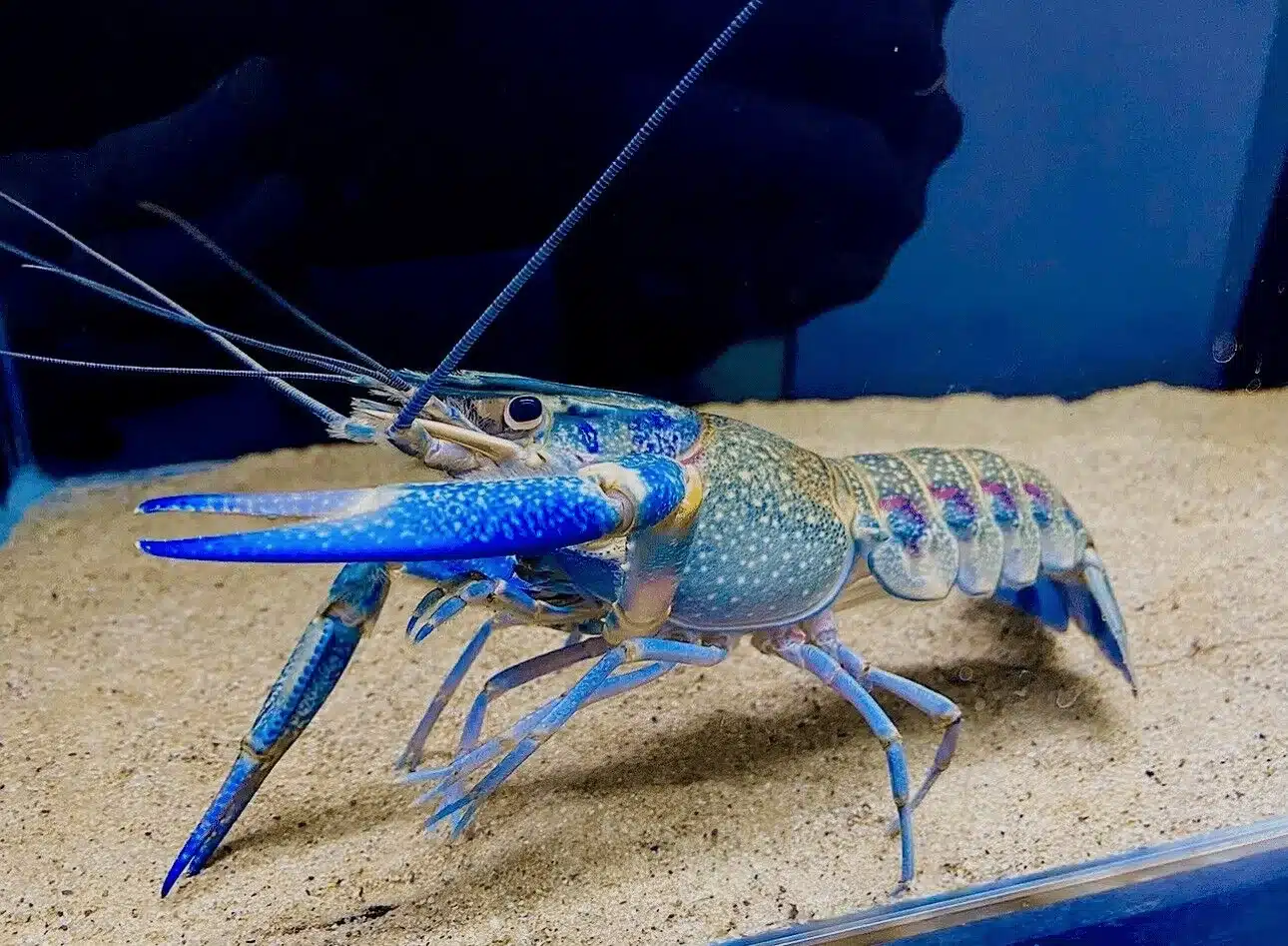
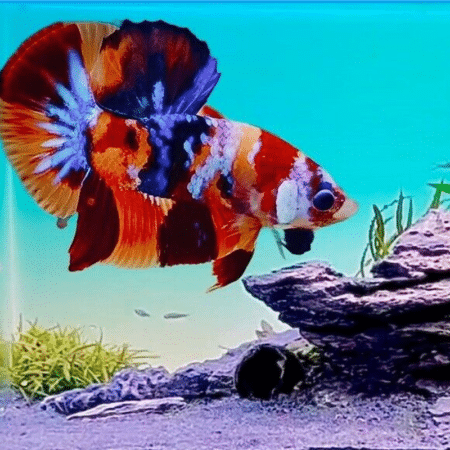



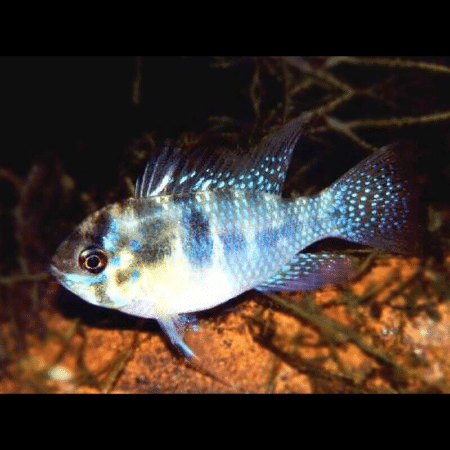


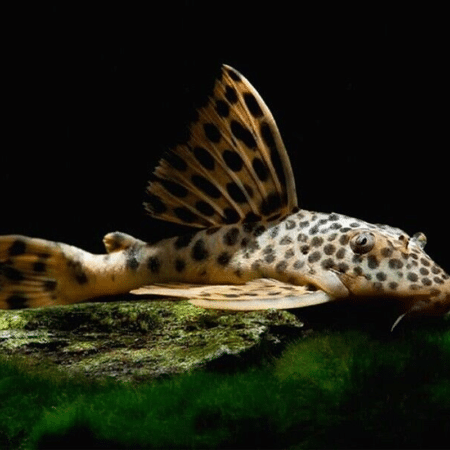
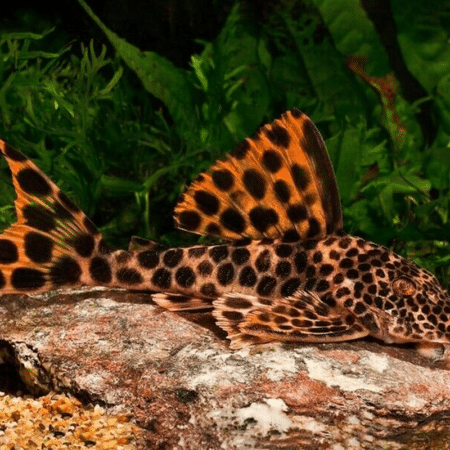
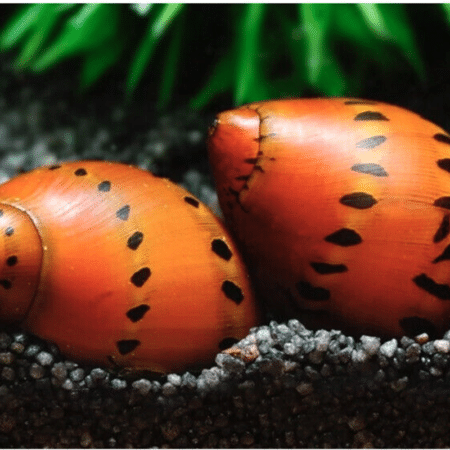

Emily Carter (verified owner) –
I recently purchased the Red Claw Blue Lobster crayfish (Cherax quadricarinatus) for my freshwater tank, and I couldn’t be happier! After just two weeks, I can see how well they have adapted. Their bright colors really pop against the greenery of my aquarium, and they are surprisingly active! I love watching them forage and explore. It’s clear they appreciate the hiding spots I’ve provided; their natural behavior is fascinating to observe. Compared to other crayfish I’ve had in the past, these are much more lively and engaging. While they have been a little nippy with my smaller fish, it’s nothing too concerning as I made sure to house them with appropriately sized tank mates. They seem to thrive on a diet of quality fish food, and I’ve noticed their shells becoming even shinier! I definitely recommend these little guys to any freshwater aquarium enthusiast looking to add some personality and color to their setup. Just be sure to do a little research on compatibility to ensure everyone gets along. Overall, a fantastic purchase that I will certainly make again in the future!
Emily Carter (verified owner) –
I recently added the Red Claw Blue Lobster CRAYFISH to my aquarium, and I couldn’t be happier! These little guys, about 3-4 cm, have not only added vibrant color to my tank but also brought incredible personality. I’ve had them for about two months now, and they seem to thrive amongst my aquatic plants. They love to burrow and explore, which really enriches the tank environment.
What sets this species, the Cherax quadricarinatus, apart from others is their hardiness and adaptability. I’ve kept several freshwater crayfish before, but these guys are incredibly engaging and active. They interact well with my other fish and have even become a great conversation starter when friends come over!
One minor concern is their tendency to be a bit nippy, especially during feeding time, so I’d recommend monitoring their interactions with smaller fish. Overall, I highly recommend these freshwater crayfish for anyone looking to enhance their aquarium’s ecosystem or simply enjoy a unique pet. They’re perfect for both beginners and seasoned aquarists seeking to add a splash of life to their tanks!